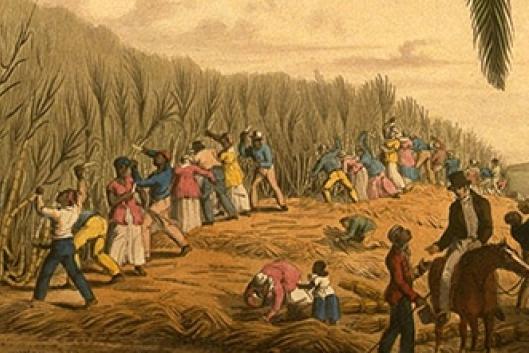Nigerian author Chimamanda Ngozi warns us of the risks of listening to the same version of a story over and over again. That story we repeatedly hear in history books, the media or literature, about a people or culture or particular place is ONE of the many existing and possible stories. But then, which story is constantly repeated? The prevalence of one particular story almost always responds to global power structures: “How they are told, who tells them, when they are told, how many stories are told, are really dependent on power (…)Stories have been used to dispossess and to malign.”(1)
Most of the dominant stories we know today were written by white men during the era of colonization. Through these stories, stereotypes and prejudices were built and imposed based on classifying the world population by “race”: black, white, Indian, brown. Of course, since white men wrote the story, white men were attributed the best possible qualities. Racism began to appear in that moment. “Race” is a mental construction of colonial rule which has since permeated the most important dimensions of global power. This story—that is to say, that people could be classified by “race”— was a way to legitimize relationships of superiority/inferiority between dominated peoples and dominators (2).
In this issue of the newsletter we want to tell other stories: Stories that make many people uncomfortable and that have to do with racism tied to environmental destruction and contamination, the appropriation of territories, and the destruction of forests and rivers. This is called Environmental Racism.
It is necessary to confront and denounce that the capitalist system, rooted in colonial logic, is structurally racist. The current economic model implicitly thrusts destruction, pollution, occupation and violence on black populations, indigenous people and farmers, with the aim of continuing to exploit, produce and therefore accumulate. It is these populations that the system (and everyone who defends it) sees as “the other;” they are peoples or “races” to be assimilated into the system, or else deprived of any right to be “other.” The ways of denying the “other's” existence and of continuing to impose a narrative that categorizes people based on “race,” can occur in many different ways, though almost always violent.
When oil is extracted in Nigeria, when millions of hectares of forests in Indonesia are burned to clear land for oil palm monoculture, when a mega-dam is built in Brazil, when a “conservation park” is set up in Thailand and prohibits entry to local peoples, when a REDD project is established in the Democratic Republic of the Congo: Who owns these lands? Which peoples are affected? Similarly, when an oil refinery opens in a city, or a municipal waste landfill is installed, are these facilities perchance built near wealthy, privileged neighborhoods, which are almost always “white”?
The answers to these questions are the other stories we have chosen to address in this issue of the newsletter. This newsletter speaks directly about environmental racism.
In this difficult challenge of reflecting on racism as a process of oppression, we recognize and stand in solidarity with the many resistance movements confronting it. People continue to resist and build networks of unity, telling many stories in order to build a world where many worlds fit. Once again, remembering Chimamanda Ngozi's words, we believe that “stories can also be used to empower and humanize. Stories can break the dignity of people, but stories can also repair that broken dignity.”
We hope this newsletter helps open up more spaces for the many stories that are essential.
(1) Chimamanda Ngozi Adichie, “The danger of a single story”, https://www.ted.com/talks/chimamanda_adichie_the_danger_of_a_single_story?language=en (video with subtitles in more than 40 languages)
(2) Anibal Quijano, Colonialidad del poder, eurocentrismo y América Latina,
https://marxismocritico.files.wordpress.com/2012/07/1161337413-anibal-quijano.pdf
